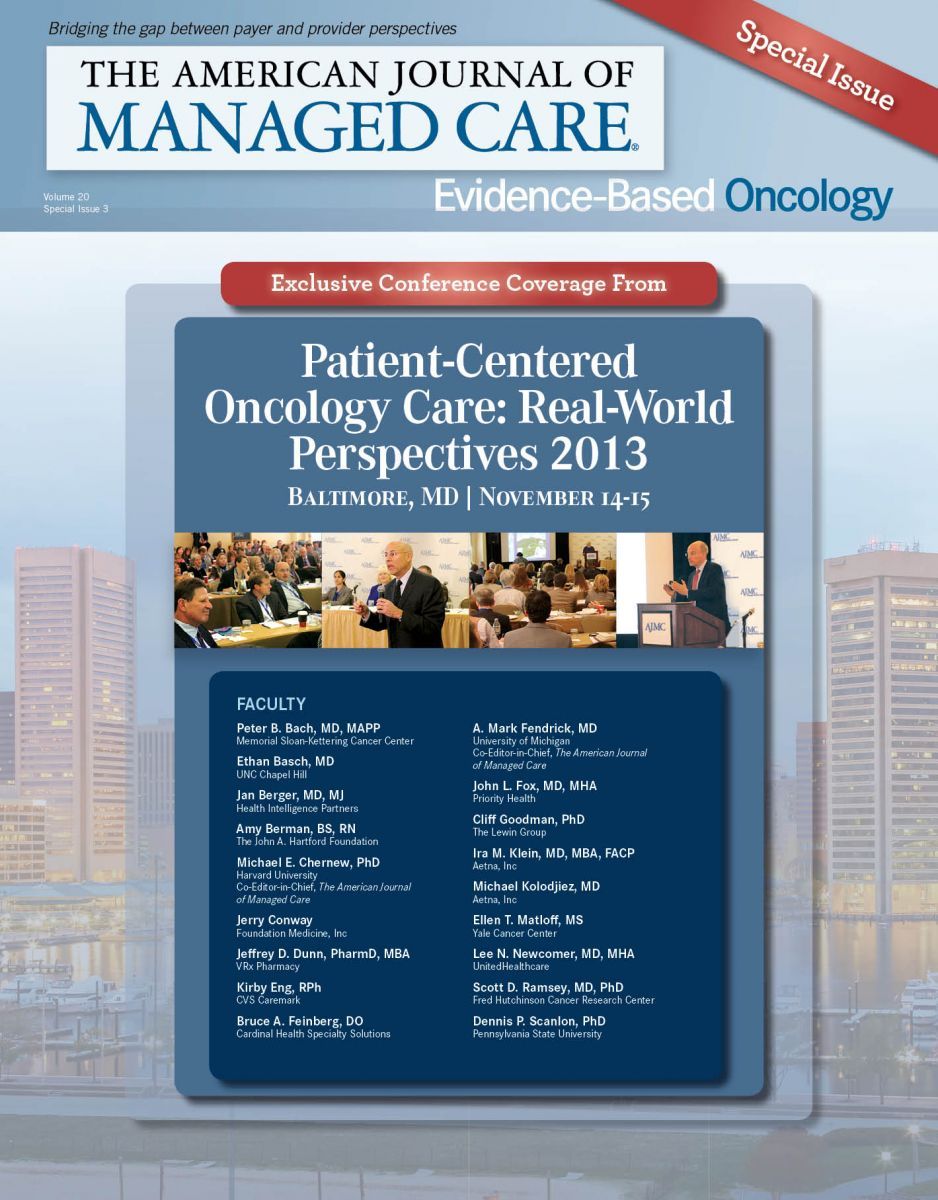- Center on Health Equity & Access
- Clinical
- Health Care Cost
- Health Care Delivery
- Insurance
- Policy
- Technology
- Value-Based Care
Measures That Improve Quality Must Be Nimble if Imperfect, UnitedHealthcare's Newcomer Explains
Lee N. Newcomer, MD, MHA, senior vice president for Oncology, Genetics and Women's Health at UnitedHealthcare, spoke on Defining and Measuring Quality Outcomes in Oncology.
Lee N. Newcomer, MD, MHA, senior vice president for Oncology, Genetics and Women’s Health at UnitedHealthcare, spoke next on “Defining and Measuring Quality Outcomes in Oncology.”
Not long ago, a cancer care provider asked to measure quality would eschew attempts to take on the task, and declare that they would know quality when they saw it. That time has passed, said Lee N. Newcomer, MD, MHA, but what measurements will fill the void?
Newcomer, the senior vice president for Oncology, Genetics and Women’s Health at UnitedHealthcare, said that while oncology has accepted the need for measures of quality, deciding what they will be remains a work in progress. He outlined how to get beyond “process” measurements and take on the real cost drivers.
First, in Newcomer’s view, measurements used for accreditation or reimbursement are so heavily vetted that they become worthless. Second, measurements that can bring quality improvement quickly are necessarily imperfect, but perfection is not point. Changing behavior is, and he described how “organic” measurements are more valuable, as they can be changed midcourse if payers realize they are not capturing the right information.
UnitedHealthcare has created a database of information collected from its oncology providers. Newcomer said the insurer asked about the cost of a single course of specialty drugs—and providers were asked to fill out a form requesting information on histology, disease stage, gene tests, relapses, and current status of patients with breast, colon, lung, and prostate cancers. Most providers—70%—provided the data willingly. And now UnitedHealthcare has data on 65,000 patients, which it can use to spot trends and help providers make adjustments.
“You’re trying to move quickly here; you’re trying to find out how you can measure changes that you make in your processes, and being inclusive gets you numbers faster,” Newcomer said.
He offered this example: A hospital was told its readmission rates were too high after patients were treated for toxicity to chemotherapy. Leaving it up to the patient to call the clinic for follow-up appointments meant that many were not seen for 30 to 40 days. People got sick and had to be readmitted. After being told of the problem, the hospital worked to schedule follow-up visits 48 hours before discharge. Readmission rates are down.
“You need very instantaneous data to help people improve,” Newcomer said. That data should also be transparent; the public should have the ability to judge providers the same way payers do. Hospitals that don’t release data aren’t fooling anyone, Newcomer said, because payers can get it through their own means. As data collection becomes more commonplace and robust, there will be more data and more real-time assessments of quality, he predicts.
“The notion has been that patients aren’t smart enough to use that data correctly; they won’t risk-adjust, and I think that’s bologna,” Newcomer said.
Keys, he said, are for costs of care to be part of the quality equation, and for statisticians to be involved. An analysis of a clinic’s survival rates that doesn’t break down data by tumor type is less valuable than one that does, for example.
EBO
Newcomer also said that as payers collect and analyze more data, it may change just who or what is held accountable for quality. “If we can now look at outcomes, and if I can, as a payer, gather data on hundreds, if not thousands, of patients with a specific clinical diagnosis treated with several different regimens, we should be comparing the chemotherapy regimens, not the doctors,” he said.

Telehealth Intervention by Pharmacists Collaboratively Enhances Hypertension Management and Outcomes
January 7th 2026Patient interaction and enhanced support with clinical pharmacists significantly improved pass rates for a measure of controlling blood pressure compared with usual care.
Read More
HEDIS Glycemic Goal Achieved Using Control-IQ Technology
December 22nd 2025A greater proportion of patients with type 1 diabetes who used automated insulin delivery systems vs multiple daily injections achieved the Healthcare Effectiveness Data and Information Set (HEDIS) glycemic measure.
Read More
Linking Data to Determine Risk for 30-Day Readmissions in Dementia
December 22nd 2025This study found that certain characteristics in linked electronic health record data across episodes of care can help identify patients with Alzheimer disease and related dementias at high risk of 30-day readmissions.
Read More
Performance of 2-Stage Health-Related Social Needs Screening Using Area-Level Measures
December 19th 2025Limiting health-related social needs screening to lower-income areas would reduce screening burdens; however, this study found a 2-stage screening approach based on geography to be suboptimal.
Read More

